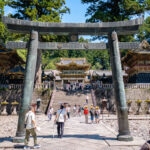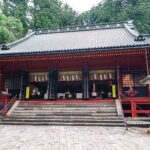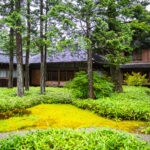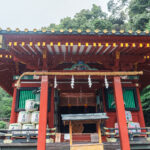This post may contain affiliate links. Please read our disclosure policy.
Hidden in the forest near Toshogu Shrine, Nikkosan Rinnoji Taiyuin blends Shinto and Buddhist architecture in a solemn setting that honors the third Tokugawa shogun.
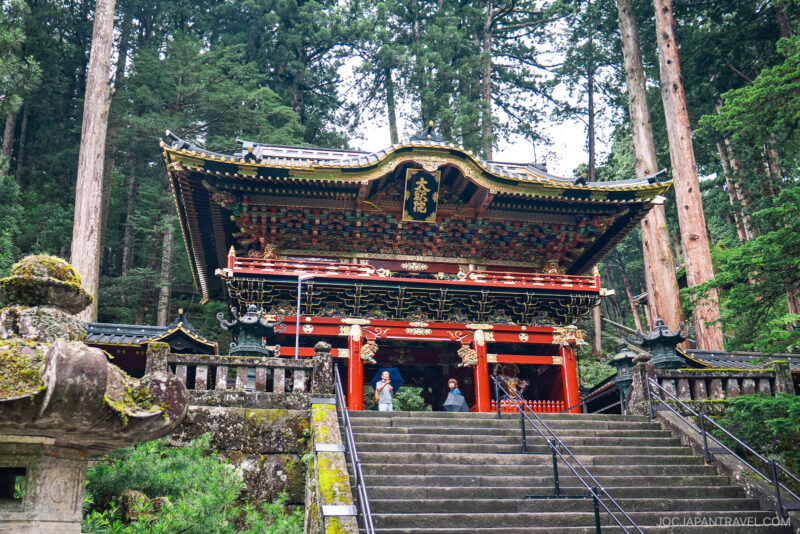
A Quiet Contrast to Toshogu
During our trip to Nikko, visiting Taiyuin felt like stepping into another world. Toshogu dazzled us with its gold and ornamentation, but Taiyuin was calm, understated, and deeply moving. It’s the mausoleum of Tokugawa Iemitsu, grandson of Tokugawa Ieyasu, and its design reflects his wish for reverence without grandeur.
A Blend of Shinto and Buddhist Architecture
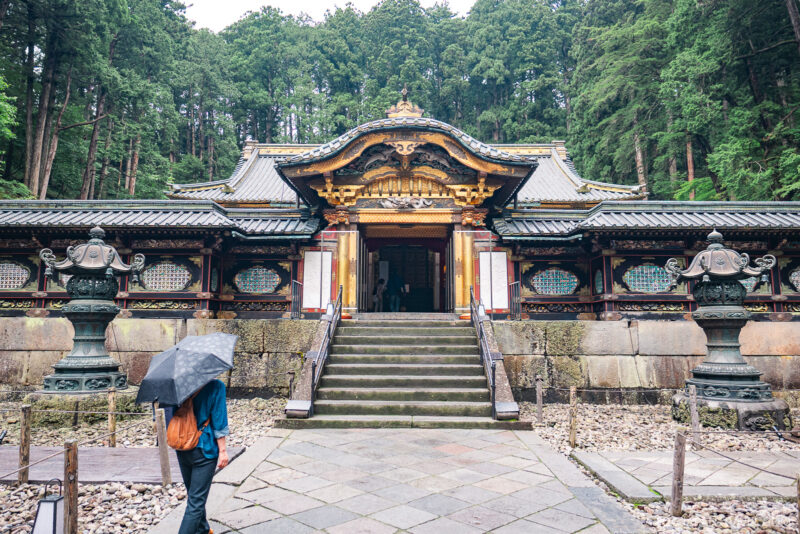
One of the most fascinating aspects of Taiyuin is its fusion of architectural styles. The Niomon Gate is guarded by fierce Buddhist deities, while further inside, the halls resemble Shinto shrines. This blending mirrors Japan’s religious history, where Buddhist and Shinto traditions often coexisted and complemented one another.
Gates of Elegance and Symbolism
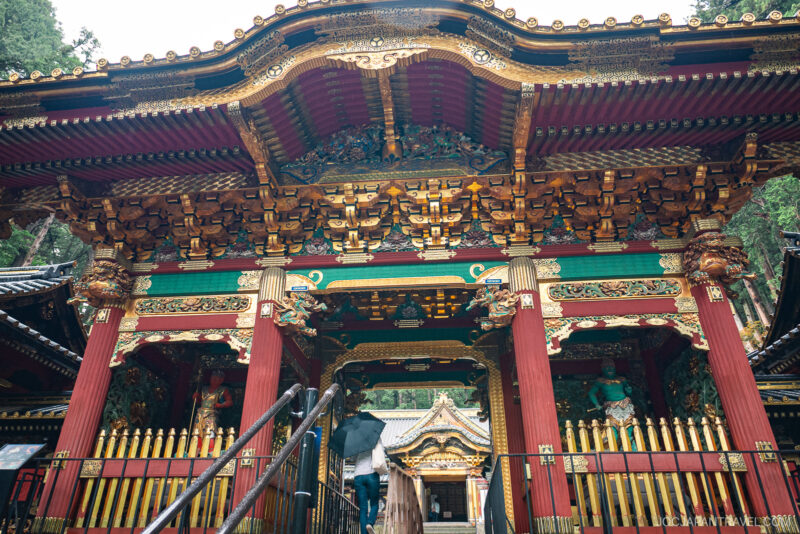
The approach to the mausoleum is a journey through three magnificent gates, each with its own meaning.
- Niomon Gate (仁王門): Flanked by guardian kings that protect the temple grounds.
- Nitenmon Gate (二天門): Watched over by two celestial warrior deities, Zochoten and Jikokuten.
- Karamon Gate (唐門): Modest yet refined, decorated with gold leaf and carvings that lead directly to the worship hall.
The Mausoleum of Tokugawa Iemitsu
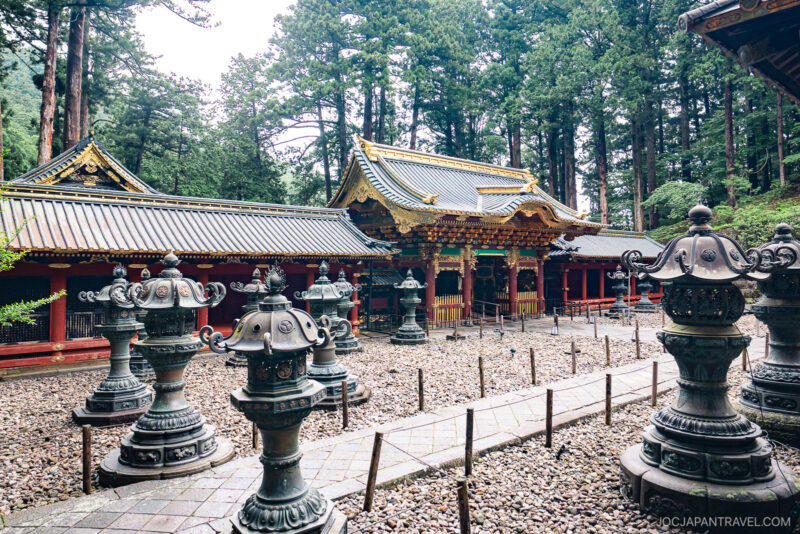
Visitors cannot enter the inner tomb, which lies beyond the Kokamon Gate, but the design of the entire complex draws your attention upward. The narrowing paths and subdued colors guide you toward reflection, just as Iemitsu intended. The atmosphere here is solemn, with less grandeur than Toshogu, yet no less beautiful.
How to Get to Nikkosan Rinnoji Taiyuin
Bus
- From Tobu Nikko Station or JR Nikko Station, board the World Heritage Sightseeing Bus.
- Get off at Taiyuin Futarasan-jinja-mae (大猷院・二荒山神社前). The ride takes about 15 to 16 minutes.
- From the stop, walk 5 to 8 minutes to the Niomon Gate.
Walking Between Nearby Sights
- From Toshogu (東照宮): 5 to 10 minutes on foot.
- From Shinkyo Bridge (神橋): 15 to 20 minutes uphill.
By Car
- From central Tokyo, drive 2.5 to 3 hours via the Tohoku Expressway.
- Use paid parking near the Toshogu complex or Nishisando. Walk 5 to 10 minutes.
Pro Tip: Consider the World Heritage Bus day pass for easy hops between Taiyuin, Toshogu, Rinnoji, and Futarasan Jinja. Start early to avoid crowds.
Is Nikkosan Rinnoji Taiyuin Worth Visiting?
Taiyiin may not be as ornate as Toshogu, but that is exactly its appeal. It’s quieter, easier to explore at your own pace, and rich in symbolic beauty. If you want to experience a more contemplative side of Nikko’s history, this site is a must-visit.
More to Explore Nearby
As the elaborate mausoleum for a Tokugawa Shogun, Taiyuin is central to the Nikko World Heritage area, positioning you close to other magnificent shrines, beautiful imperial architecture, and the region’s vast natural scenery.
- Nikko Toshogu Shrine – Visit the most famous World Heritage site nearby, the resting place of Iemitsu’s grandfather, Tokugawa Ieyasu, renowned for its stunning, ornate detail.
- Nikko Futarasan Jinja – Explore this peaceful Shinto shrine, a crucial part of the World Heritage cluster dedicated to the deities of Nikko’s three sacred mountains.
- Nikko Tamozawa Imperial Villa – Discover this beautiful imperial residence and memorial park that combines Edo, Meiji, and Taisho architectural styles.
- Kinugawa Onsen – Travel to this nearby famous hot spring resort area, known for its scenic river valley and relaxing thermal baths.

